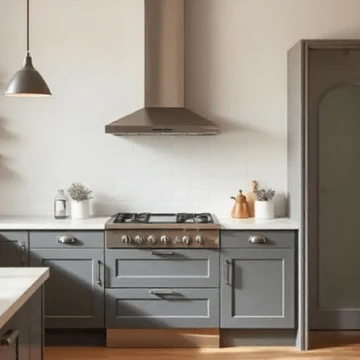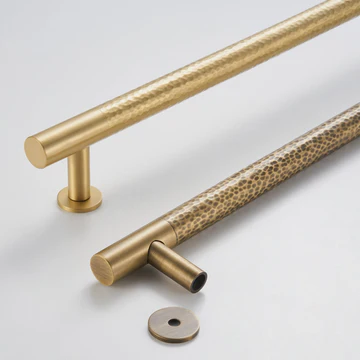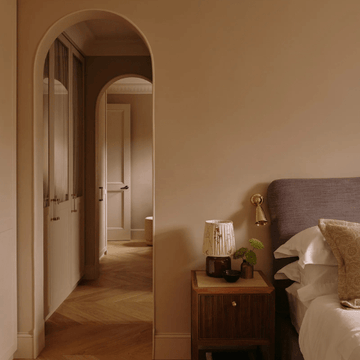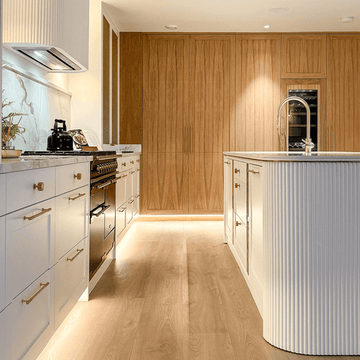Colour is one of the most powerful tools in interior design. It influences mood, energy levels, and even the perception of space. Whether you're looking to create a relaxing retreat or an energising environment, understanding colour psychology can help you make informed choices that enhance both aesthetics and well-being.
Warm vs. Cool Colours: Setting the Right Tone
Before diving into specific colours, it’s important to understand the difference between warm and cool tones:
- Warm Colours (reds, oranges, yellows) evoke energy, warmth, and social interaction.
- Cool Colours (blues, greens, purples) create a calming, soothing effect that promotes relaxation.
Balancing warm and cool tones can help tailor a space to its intended purpose and mood.
Choosing the Right Colours for Each Room
1. Blue – The Ultimate Calming Shade
Blue is widely associated with tranquillity and focus, making it a perfect choice for bedrooms, bathrooms, and home offices. Lighter blues encourage relaxation, while navy and deep blues add elegance and depth. Consider pairing blue with crisp whites for a fresh, timeless look.
2. Green – Nature’s Neutral Green is linked to balance, renewal, and serenity. Earthy tones like sage and olive work well in bedrooms and living spaces, while vibrant greens add a fresh, modern touch to kitchens and bathrooms. Green pairs beautifully with natural materials like wood and stone, reinforcing a natural design approach.
3. Yellow – Bright and Uplifting
Yellow stimulates positivity and creativity, making it an excellent choice for kitchens and dining areas. Soft yellows add warmth without overwhelming a space, while mustard orochre shades bring a sophisticated, vintage feel. Pair yellow with neutrals or deep blue for a balanced palette.
4. Red – Bold and Energetic
Red is the colour of passion and excitement, often used in dining rooms and entertainment spaces to stimulate conversation and appetite. While too much red can feel overwhelming, it works well as an accent colour in accessories, rugs, or statement walls.
5. Neutrals – The Timeless Foundation
Neutrals such as beige, taupe, and greige provide a classic backdrop that allows other design elements to shine. Perfect for open-plan living spaces, neutrals create versatility and can be easily updated with seasonal décor changes.
6. Purple – Creativity and Luxury
Purple, particularly deep shades like plum or eggplant, adds a luxurious and dramatic touch to interiors. Lighter variations, such as lavender, offer a soft, calming atmosphere ideal for bedrooms and reading nooks.
7. Pink – Soft, Modern, and Playful
Once reserved for nurseries, pink has found its place in sophisticated interiors. Blush pink works beautifully in living rooms, while richer pinks, such as coral or dusty rose, create a chic and inviting feel.
8. Grey – Modern and Versatile
Grey remains a staple in contemporary design, offering sophistication and neutrality. Light greys brighten up small spaces, while charcoal greys add a moody, dramatic effect. Pair grey with metallics or natural wood for a modern, stylish aesthetic.
9. Orange – Energising and Fun
Orange is a high-energy colour, making it great for workout rooms or creative spaces. Earthier terracotta tones, on the other hand, bring warmth and depth to interiors, working especially well in Mediterranean or bohemian-inspired homes.
10. Black – Bold and Elegant
Black may seem daring, but when used strategically, it can create a sophisticated and high-impact look. Whether through accent walls, furniture, or décor, black adds depth and contrast, making other colours pop.
Practical Tips for Using Colour in Your Home
- Start Small: If you're hesitant about bold colours, introduce them through accessories like cushions, rugs, or artwork.
- Consider Lighting: Colours can look different depending on natural and artificial lighting, so test samples in various conditions before committing.
- Use Colour Psychology to Your Advantage: Tailor your colour choices to match the function of each room—calm hues for restful spaces, energising tones for social areas.
- Create Flow: Maintain a cohesive colour palette throughout your home to create a harmonious and well-balanced environment.
Conclusion
The psychology of colour is a powerful tool in interior design, helping you craft spaces that not only look beautiful but also enhance your mood and well-being. By understanding the emotional effects of different hues, you can create a home that feels as good as it looks.
Whether you prefer the tranquillity of blue, the warmth of earth tones, or the drama of deep shades, there’s a colour scheme that will perfectly suit your style and needs. Ready to refresh your home? Start experimenting with these colours and transform your space today!
Sources:
1. The Spruce: "5 Bedroom Paint Color Trends You'll See Everywhere in 2025, According to Designers" https://www.thespruce.com/2025-bedroom-paint-color-trends-8774742 2. Better Homes & Gardens: "Channel the Quiet Luxury Home Aesthetic with These Proven Paint Colors" https://www.bhg.com/quiet-luxury-paint-colors-8663593 3. Real Simple: "Designers Predict the 9 Bedroom Colors That Will Dominate in 2025" https://www.realsimple.com/top-bedroom-paint-colors-2025-8777499 4. Stoneside: "Understanding the Psychology of Color in Spaces" https://www.stoneside.com/resources/articles/interior-design-understanding-the- psychology-of-color-in-spaces 5. Nativa Interiors: "How to Use Color Psychology in Interior Design" https://nativainteriors.com/blog/how-to-use-color-psychology-in-interior-design/ 6. Swatchbox: "The Psychology of Color in Interior Design" https://www.swatchbox.com/blog/The-Psychology-of-Color-in-Interior-Design 7. Foyr: "The Psychology of Colors in Interior Design" https://foyr.com/learn/psychology-of-colors-in-interior-design 8. The Interior Design Institute: "The Power of Color in Design: Psychology & Inspiring Ideas" https://www.theinteriordesigninstitute.com/us/en/blog-power-of-color-psychology-in-design 9. Wikipedia: "Interior Design Psychology" https://en.wikipedia.org/wiki/Interior_design_psychology





